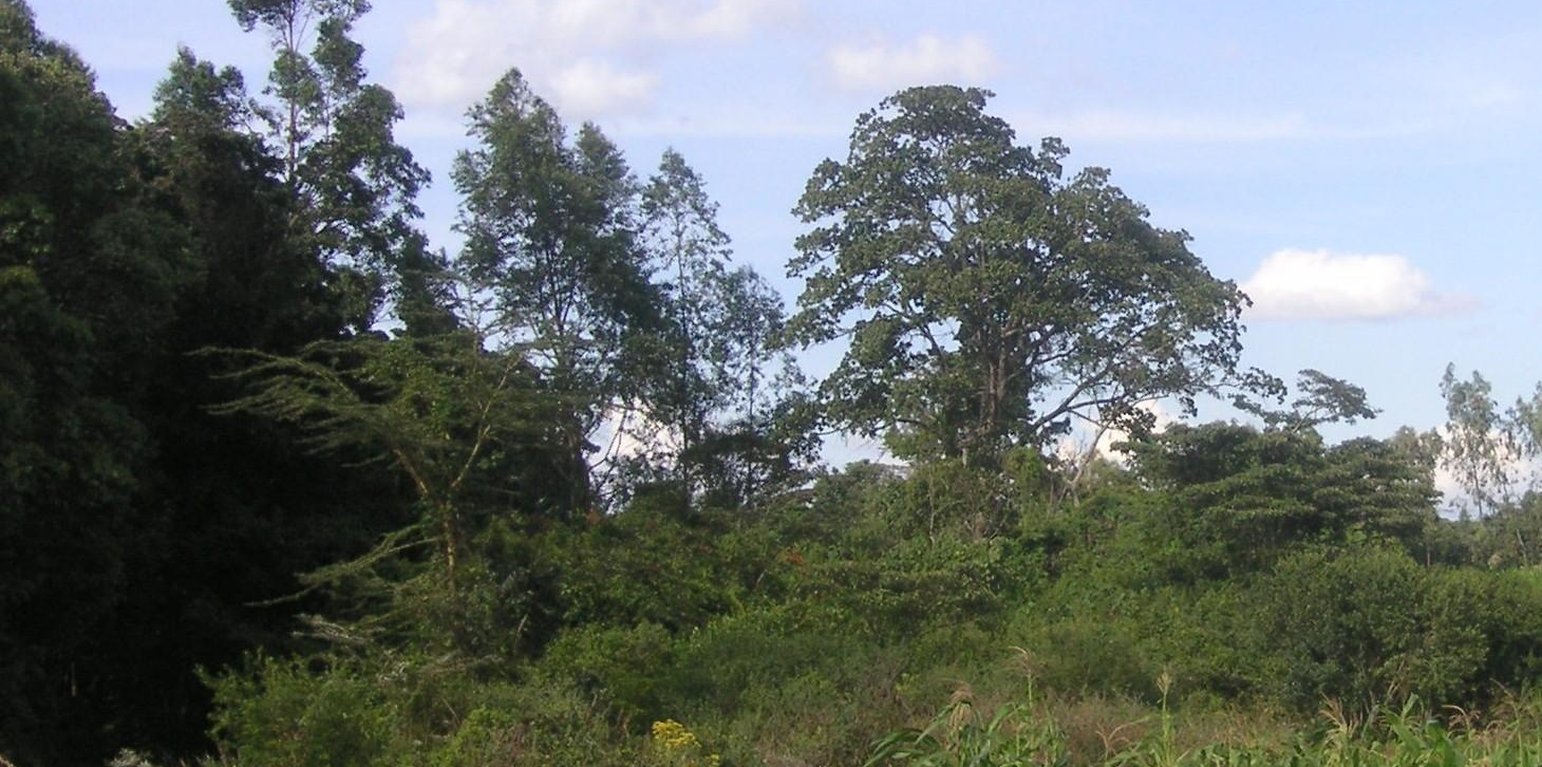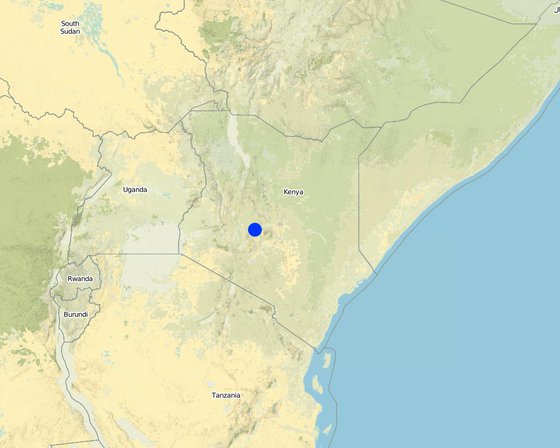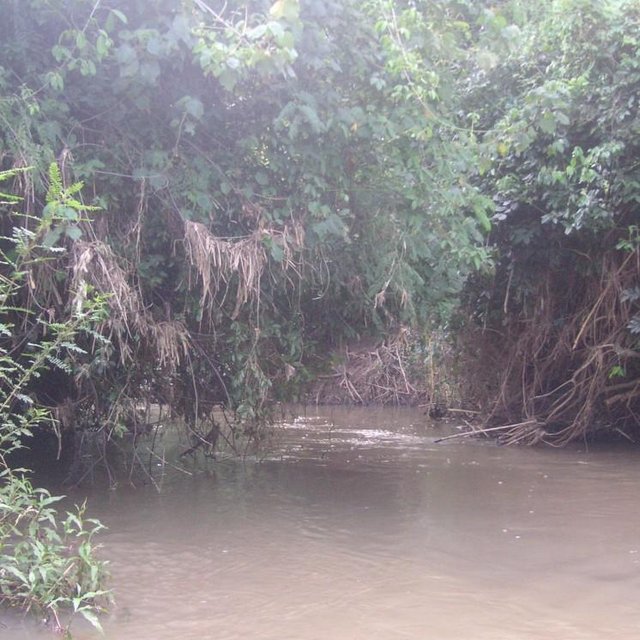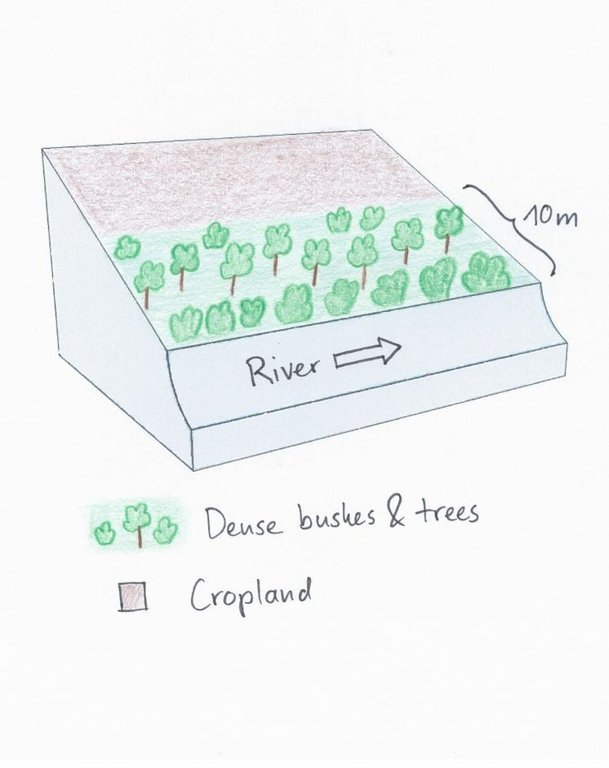



The studied land plot is situated in the semi-arid savannah zone of the Naro Moru sub-catchment at the foot of Mt. Kenya. A small-scale farmer leaves the riparian vegetation undisturbed, which enables the growth of dense bushes. On the one hand, the riparian vegetation contributes to prevent land loss caused by riverbank erosion, on the other hand it is a habitat for the special riparian fauna and flora.
Purpose of the Technology: Despite semi-arid conditions, there is a high probability of flooding. Heavy rainfalls on upper slopes of Mt. Kenya lead to flood events in the semi-arid areas of Naro Moru River. These events have a destructive effect on the riverbanks, which have become instable by human induced activities such as overgrazing and deforestation. The instable riparian soils are eroded easily. The farmers lose their precious land and the water is polluted.
Establishment / maintenance activities and inputs: A good way to overcome the riverbank degradation triggered by high runoff is a passive approach: simply leaving the riparian area undisturbed by human interference. Trees, bushes and grasses stabilize even steep riverbanks with their invading roots. As a result, almost no erosion takes place and infiltration is enhanced during rain events. The riparian microclimate, which is characterized by cooler temperatures during the day and slightly warmer temperatures during the night, is very special compared to the surrounding semi-arid zones. Also water availability is much higher than in the surroundings. Thus, this habitat offers a high biodiversity.
Natural / human environment: The plot is situated on a plateau at the western side of Mt. Kenya. There is not the same amount of precipitation as at the foot slopes of Mt. Kenya. However, the area still benefits from the runoff that is generated on the mountain. Precipitation in the so-called savannah zone ranges from 600mm to 900mm per year. Due to the high evaporation, rain-fed agriculture is only partly possible. Therefore most land users depend on irrigation using river water.
During the last decades, the region has experienced a still continuing population growth which increases population pressure in the area and removal and use of the vegetation along the rivers. The good accessibility and the moderate tourism allow even off-farm income-generation.

Lugar: Naro Moru, Kenya/Central Province, Kenia
No. de sitios de Tecnología analizados:
Difusión de la Tecnología: distribuida parejamente sobre un área (approx. < 0.1 km2 (10 ha))
¿En un área de protección permanente?:
Fecha de la implementación: 10-50 años atrás
Tipo de introducción






| Especifique insumo | Unidad | Cantidad | Costos por unidad (Kenyan Shilling) | Costos totales por insumo (Kenyan Shilling) | % de los costos cubiertos por los usuarios de las tierras |
| Mano de obra | |||||
| Control of species composition and destruction of invading plants | Persons/day | 2,0 | 3,0 | 6,0 | 100,0 |
| Indique los costos totales para mantenecer la Tecnología | 6.0 | ||||
| Costos totales para mantener la Tecnología en USD | 0.07 | ||||
Before the establishment of the technology, the farmer used to prune the trees. He does not do that anymore.